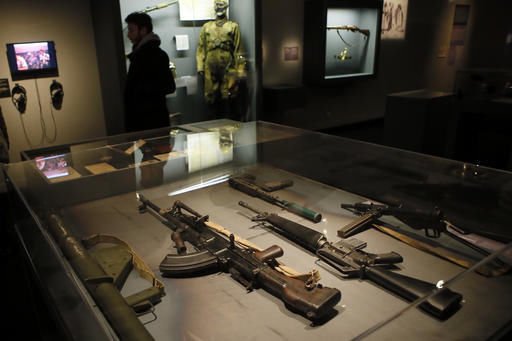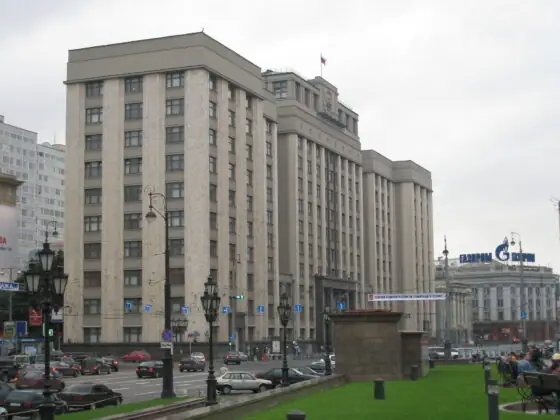(PONARS Policy Memo) Unfinished reforms, growing social discontent, and ongoing war with Russia deeply destabilize Ukraine. Under such strained conditions, what are the chances of Ukraine’s current government, and specifically the presidency of Petro Poroshenko, to survive until the end of their elected terms? Regime stability is a condition for the success of economic and political modernization and for the termination of the Donbas conflict. While the concept of political stability has been theorized from different angles and perspectives, regime stability has rarely been studied.
This memo approaches the issue of regime stability empirically, first by defining basic regime stability indicators and second by assessing them in two points in time: 2013 and 2017. The first timeframe corresponds to the third year of the presidency of Viktor Yanukovych and the second to the third year of the presidency of Petro Poroshenko. This comparison will help uncover important trends in Ukraine as well as the chances of Poroshenko finishing his first term and his prospects for being reelected. As demonstrated here, both the Yanukovych and Poroshenko administrations during these periods featured high instability, with Poroshenko’s being more vulnerable to domestic challenges than his predecessor’s. Considering that economic growth is contingent on political stability and how closely bound Poroshenko’s regime is to Western support, it is important that the West double its efforts to embolden reforms in Ukraine.
Components of Regime Stability
A “regime” is conventionally understood to be the set of players in power (the president and the government) while “regime stability” refers to the capacity of the players to prevent threatening contingencies arising internally or externally that may lead to its downfall. Regime stability is a narrower concept than political stability. While the latter relates to the state and its institutions, the former centers on people who exercise power on behalf of the state.
Political scientists do not possess a single instrument for measuring regime stability. This is mostly because the threats that democratic and autocratic governments typically face are different. These caveats are important when discussing hybrid regimes like Ukraine’s. The country has never been either completely democratic or completely authoritarian. Since the mid-1990s, Ukraine’s regime has had competitive elections but it has always retained deeply entrenched clientelism, corruption, and weak rule of law.
The concept of regime stability adopted here is comprised of five components in two groupings: legitimacy, efficacy, and effectiveness, and vertical and horizontal threats. While the first three were developed by Juan Linz and Alfred Stepan (1978) and pertain to the breakdown of democratic regimes, the latter two appeared in more recent studies about the challenges that autocrats face.
While legitimacy is exhibited by public support of the authorities and hence has a quantitative dimension, efficacy (the capacity to find solutions to important problems) and effectiveness (the capacity to implement policies with desired ends) are somewhat more difficult to measure in quantitative terms. Nonetheless, these three components can be exhibited by public attitudes toward the behavior of the ruling regime, such as by looking at surveys measuring confidence and support for the president, support for reforms initiated by the government, and attitudes to Ukrainian affairs that prompt deep public commotion. Responses are averaged and transposed onto a 0-100 percent scale, with a threshold of 50 percent or higher indicating legitimacy. Effectiveness prevails over ineffectiveness if more than 50 percent of the respondents approve of the government’s actions concerning a given sphere of activity. Fulfillment of reforms is by far more important than number of reforms; it might seem that a value should be included of how much the public knows about government actions, but public awareness of governmental policies is not a mandatory measure to judge regime effectiveness.
The challenges to the “undemocratic” side of Ukraine’s regime are divided into vertical and horizontal threats. For authoritarian and hybrid regimes, a horizontal threat, such as defections of top regime associates, is considered to be more important than the danger of, say, social protest, which is positioned as a vertical threat. Defections can take different forms, from conspiracy with the purpose of a coup to betrayal and escape, thus every autocrat tries to maintain the integrity of his or her inner circle by all available means. The regime’s capacity to prevent vertical and horizontal threats is contingent upon organizational, institutional, and ideological factors, such as the presence or absence of a strong party, security apparatus, shared ideology, and external support.
Poroshenko does not possess a strong party and his formal powers are limited by Ukraine’s constitution. His ascent to power began with a secretive deal with Dmytro Firtash, Vitaly Klychko, and Serhiy Liovochkin in Vienna. After becoming president, Poroshenko tried to offset his organizational and institutional limits by appointing to key state and government positions his business partners and loyalists, including at the national bank, the prosecutor’s office, courts, and law-enforcement agencies. He compensates for his lack of a powerful party and a truly dominant faction in parliament by striking tactical alliances with key players. This is how an informal group of decisionmakers—the “strategic septet”—was formed. This alliance, however, is fragile because the sole element of its unity is rent extraction. Under limited powers and poor legitimacy, the president has to constantly assert his primacy, which entails supporting some oligarchs over other oligarchs. Poroshenko’s initial partnerships and then conflicts with figures such as Ihor Kolomoisky, Michael Saakashvili, and Lviv Mayor Andriy Sadovyi are the most vivid examples of the hidden struggle for power and rents. If Poroshenko succeeds in ensuring the loyalty of key oligarchs during the second half of his presidency, the horizontal threats can be neutralized. The reaction of Ukrainians, the vertical threats, are less predictable. The first two protest movements, in 2004 and 2014, were citizen revolts against stolen elections and stolen expectations. There is talk about a third major protest now circulating in Ukraine (discussed on and off since 2014) but it cannot be determined in advance what specific event will force people out onto the streets and how long such a mobilization might last. Russia, of course, will continue to meddle in Ukraine, but as time goes by, its influence is becoming less threatening to the current regime.
Measuring Regime Stability
How stable is Ukraine’s current regime in comparison to Yanukovych’s? Although the referents chosen to evaluate legitimacy, efficacy, and effectiveness primarily mirror public perception of the government, they allow for tracking the dynamics of each component and for the comparison of a median value of all dimensions in two points in time.
For measuring vertical threats, the focus is on the percentage of those who are not ready to protest, as this part of the population would represent a silent segment of support for the regime. Difficulties arise with estimating the horizontal threats. As the example of Yanukovych confirms, clients can remain united around their patron until an unpredictable variable gets in the way. In the case of Yanukovych, it was his (or forced by Russia) decision to violently suppress the Euromaidan movement. Therefore, the value of this indicator for mid-2013 and mid-2017 is defined at 50 percent (the midpoint in the methodology denoting neither for nor against regime destabilization). Table 1 summarizes the values of each dimension.
The Russian factor is not taken into account for two reasons. First, President Vladimir Putin failed to overthrow the “Kyiv junta” years after power changed hands in Kyiv. Second, the U.S. and EU sanctions have raised the cost of new escalations for the Russian side. Russia is thus unlikely to impact Poroshenko’s regime significantly in ways that differed from 2013.
Table 1. Regime Stability Values
|
|
Value in %
|
|
|
Indicators
|
2013/2014
(Yanukovych)
|
2016/2017
(Poroshenko)
|
|
Legitimacy
Confidence (in the president and government)
|
|
|
|
Legitimacy
Support (for the president and government)
|
42.8
|
|
|
Efficacy Events are moving in the right direction
|
15.4
(October 2013)
|
(April, 2016)
|
|
Effectiveness
Ready to endure some financial difficulties
|
43,4
|
35
|
|
Effectiveness
In general, the situation has changed for the better
|
(December, 2013)
|
(December, 2016)
|
|
Protest potential
Ready to participate in various protests
|
22
(November, 2013, prior to the Euromaidan)
|
48.5
|
|
Protest potential
Not ready to protest
|
56
|
45.6
|
|
Defection potential
|
50
|
50
|
|
Median
|
37.2
|
34.4
|
As seen in the table, the values of the first three dimensions, in particular for legitimacy, deteriorated significantly. Compared to the third year of Yanukovych’s presidency, overall confidence in the new president and government has fallen almost twofold. Similarly, the level of support also decreased. Public frustrations provoked by occurrences such as “Mr. Petro Incognito’s” multi-million dollar Christmas vacation and attendance at the posh Opera Ball in Vienna are indications that the credit given to Poroshenko and his team in 2014 has been melting quickly.
By 2016-17, the efficacy and effectiveness indicators shrank by roughly 10 percent, while the protest potential value grew. At that time, more Ukrainians expressed their willingness to participate in various forms of social protest and fewer were willing to abstain. These are obviously subjective responses and they do not necessarily translate into a new Euromaidan protest taking place, but the trend is clearly not in the government’s favor.
The defection potential measure is a real test of loyalty. Although the values are neutral here based on the analytical timeframes, it is an important dimension to monitor. Defections tend to happen during moments of crisis. It is precisely at such moments that the expectations of a patron’s clients regarding the patron’s ability to remain in power may change. The more open and transparent the politics are toward a leader’s inner circle, the greater support an incumbent enjoys. This is usually the case when the unity of the ruling group rests on values (not necessarily democratic ones) rather than a thirst for rent extraction. The secretive deals, tactical alliances, and intrigues still taking place in Kyiv indicate that Ukraine’s Byzantine style of politics not only survived the 2014 revolution but has flourished at Poroshenko’s court. The wisdom though, as the experience of Poroshenko’s predecessor suggests, is that clients can readily switch loyalties when a patron finds himself in a highly vulnerable situation.
Conclusion
This analysis allows for three concluding remarks. First, the dynamics of the indicators (excluding defection potential) during the third year of Poroshenko are negative for the incumbent. As the median values demonstrate, both the Yanukovych and Poroshenko regimes were/are inherently unstable. But Poroshenko’s regime, it turns out, is more vulnerable to domestic challenges than Yanukovych’s. Second, the West, and the United States in particular, should absorb these gauges and take a more resolute stance toward the course of reforms in Ukraine. After all, Poroshenko’s survival is highly dependent on Western support (financial loans, military assistance, maintenance of sanctions against Russia, etc.). Making reform implementation a prerequisite for continued assistance, the West can both help stabilize the regime and make reforms irreversible. The West has an opening: it could take the side of the roughly 50 percent of Ukrainians who are decidedly pro-reform. Third, economic growth is contingent on political and regime stability. Finally, a stable EU/NATO “southeastern flank” would be constructive for the European security architecture.
Yuriy Matsiyevsky is Associate Professor at the National University of Ostroh Academy, Ukraine.
[PDF]
Click here for Homepage image credit.










